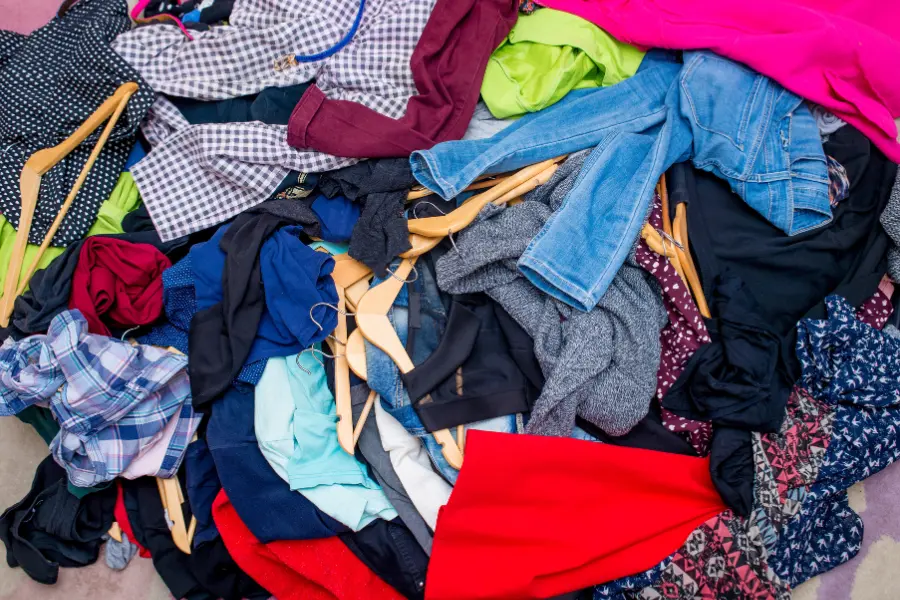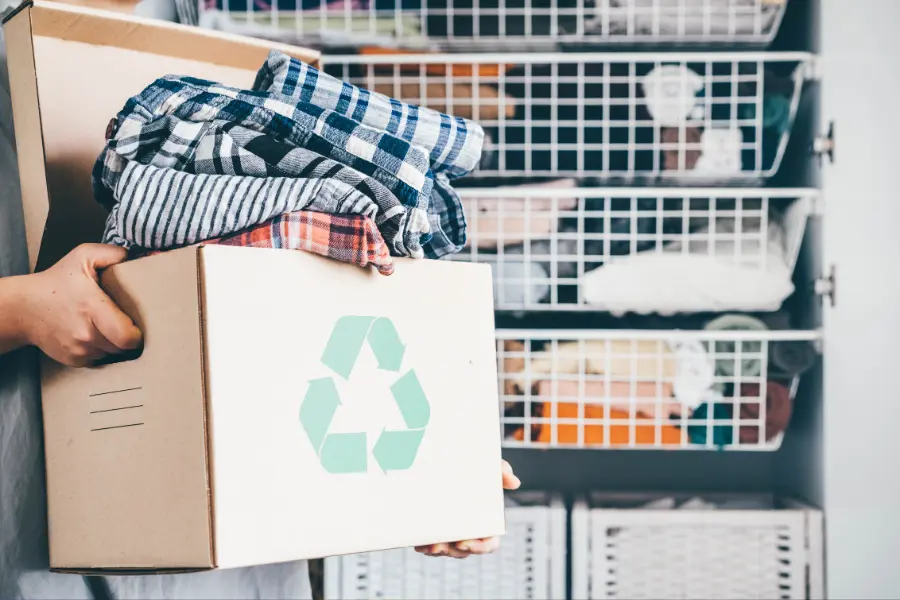
According to the Council for Textile Recycling, the US generates an average of 25 billion pounds of textiles per year. Of that number, 85% (21 billion pounds) ends up in landfills. Natural fibers take years to break down, while synthetics are designed not to decompose at all, filling global landfill space at an alarming rate.
While it’s easy to blame the fashion industry for the majority of excessive textile waste, consumers also play a significant role. The demand for “fast fashion” has more than doubled in the past 20 years, as has the average person’s wardrobe. Consumers can force change in the fashion industry, but we will need to change our habits to reduce waste and increase the demand for more sustainable clothing options.
Below, we will take a deeper look at textile waste and discuss options that will prevent your textiles from ending up in landfills.
What are Textiles?

Textiles are items made from fabric or cloth. The main source of textile waste comes from discarded clothing, however, the term refers to many different kinds of products.
Textile waste includes:
- Clothing & footwear
- Furniture & upholstery
- Carpets & rugs
- Bedding, linens, & curtains
- Towels, cloth napkins, and tablecloths
- Pre-consumer deadstock (unsellable inventory that was produced, but never used)
Natural fibers come from animal, vegetable, or mineral sources. Common natural fibers include cotton, wool, and silk. Synthetic fibers are made through a chemical process. Popular synthetics include polyester, nylon, and spandex. Both kinds will break down eventually, but synthetics leave behind microplastics that pollute the water supply. Both release harmful chemicals as they degrade.
Textile Waste Solutions
There are many ways consumers can reduce textile waste. Here are some solutions that prevent textiles from ending up in landfills.
Donation & Resale
You can easily donate clothes in wearable condition to thrift stores or sell them online. Other textiles like sheets, bedding, rugs, and towels may also be donated to animal shelters and other organizations. Donating or selling textiles extends the lifecycle of your items reducing manufacturing demands.
Repurpose
With a little creativity, you can find many ways to repurpose used textiles. Old t-shirts can be made into quilts or rugs, old teddy bear stuffing can be used to make pillows, and so on. Crafty businesses are even popping up to repurpose textiles into new products. Forbes recently featured a company that upcycles polyester materials to make sound insulation.
Shop Smarter
When selecting clothing, consumers should avoid fast fashion. Organic and sustainable fashion brands use methods that reduce waste and pollution, while also offering longer-lasting materials. Look for clothing made from organically grown fibers and manufactured in carbon-neutral factories, powered by renewable energy. Purchasing used, recycled, or upcycled clothing is also a responsible choice.
Recycle

Textile recycling recovers the fiber, yarn, and fabric from textile waste to be reprocessed into new products. Most commonly, textiles are broken down by mechanical processing to bring the textile back to its original form. The fibers can be dyed and spun into yarn to be used for new clothing and products.
Recycled fibers can also be made into a Poly-fill alternative, stuffing for pillows, wadding for quilts and jackets, wall and ceiling insulation, foam alternatives, acoustic paneling, and even rubber paneling from old shoes.
The Textile Recycling Process
- Collection: Textiles are collected from donation bins, clothing drives, or recycling company programs. Consumers can use free take-back programs (from brands like Nike or Patagonia) or our convenient mail-in services.
- Sorting: Textiles are sorted by color and material.
- Processing: Textiles are shredded into fibers, cleaned, and realigned in a “carding process.” The carding process separates individual fibers and twists them parallel to each other to produce a web for further processing.
- Reuse: Natural fibers are harder to recycle and often aren’t spun back into yarn. These fibers may be used for carpeting, stuffing, or other uses. Synthetic fibers may be dyed and re-spun into yarn for new clothes.
Textile recycling is circular, meaning the materials can be used again and again. Regular recycling can have a huge impact on the textile industry moving forward and greatly benefits the sustainability and health of our planet.
Recycle Your Textiles with Shred Nations
Shred Nations offers responsible and convenient textile recycling across the country. We make it easy to connect with recyclers in your area that accept clothing and other textiles. Simply, give us a call at (800) 747-3365 or fill out the form. We will instantly send you free quotes on textile recycling services near you.












